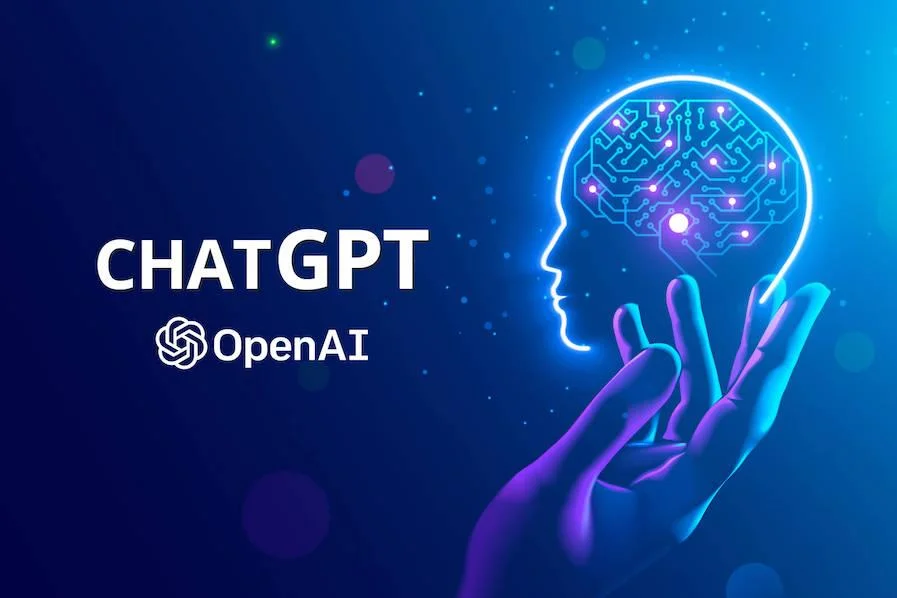ChatGPT AI is a natural language processing (NLP) model developed by OpenAI, a leading research organization in the field of artificial intelligence (AI). It is part of the GPT (Generative Pre-trained Transformer) family of models, which are designed to generate human-like text in response to a given prompt.
The ChatGPT AI model was trained on a massive corpus of text data, including books, articles, and web pages, using a technique called unsupervised learning. This means that the model learned to generate text without being explicitly trained on specific examples of text. Instead, it was trained to predict the next word in a sequence of words, based on the context of the words that came before it.
The ChatGPT AI model is a deep learning model, which means that it consists of multiple layers of artificial neurons that process input data and generate output data. The model is composed of 1.5 billion parameters, which makes it one of the largest and most powerful NLP models currently available.
Pros:
Here are few ways that ChatGPT could be used to increase productivity:
Generating meeting notes: ChatGPT can be used to generate detailed meeting notes, which can save time and reduce the need for manual note-taking. This could be especially helpful for larger meetings where it can be challenging to capture all of the key points.
Automating customer support: ChatGPT can be used to create chatbots that can provide automated customer support. This can help to reduce the workload for customer support agents and enable customers to get answers to their questions more quickly.
Generating content: ChatGPT can be used to generate content for blogs, social media posts, and other marketing materials. This could save time and reduce the need for manual content creation.
Translating text: ChatGPT can be used to translate text from one language to another. This could be particularly helpful for businesses that operate in multiple countries and need to communicate with customers or partners in different languages.
Automating data entry: ChatGPT can be used to automate data entry tasks, such as filling out forms or updating databases. This could help to reduce errors and improve the efficiency of data entry tasks.
It’s worth noting that while ChatGPT can be a powerful tool for increasing productivity, it’s important to carefully evaluate the quality of the output and ensure that it is accurate and appropriate for the task at hand.
Cons:
There are several risks and limitations associated with ChatGPT and other natural language processing (NLP) models. Here are a few key ones to keep in mind:
Bias and fairness: Like all machine learning models, ChatGPT can be affected by bias in the data it was trained on. This can result in the model generating biased or unfair text, which can have negative consequences for users. It’s important to evaluate the data used to train the model and to test the model for fairness and accuracy.
Misinformation: ChatGPT can generate text that is untrue or misleading. This is particularly concerning when it comes to news or other forms of information dissemination. It’s important to verify the accuracy of the text generated by ChatGPT before using it as a source of information.
Inappropriate or offensive content: ChatGPT can generate text that is inappropriate or offensive. This can be due to the biases in the data it was trained on, as well as the way that users interact with the model. It’s important to monitor the output of ChatGPT and to intervene if it generates inappropriate or offensive content.
Lack of context: ChatGPT can generate text that is contextually inappropriate or nonsensical. This can happen when the model doesn’t have enough context to generate a coherent response. It’s important to provide the model with sufficient context to generate accurate and appropriate responses.
Energy consumption: ChatGPT and other large-scale machine learning models can consume significant amounts of energy during training and inference. This can have negative environmental impacts and contribute to climate change. It’s important to consider the environmental impact of using ChatGPT and to explore ways to reduce energy consumption, such as using more efficient hardware or optimizing the model architecture.
Conclusion :
ChatGPT is a powerful artificial intelligence (AI) model that uses natural language processing (NLP) to generate human-like text. There are several ways that ChatGPT can be used to increase productivity, such as generating meeting notes, automating customer support, generating content, translating text, and automating data entry. However, there are also several risks and limitations associated with ChatGPT, including bias and fairness concerns, the risk of generating misinformation or inappropriate content, the lack of context, and the high energy consumption required for training and inference. It’s important to carefully evaluate the benefits and risks of using ChatGPT and to take steps to mitigate any potential negative consequences. Ultimately, ChatGPT has the potential to be a powerful tool for increasing productivity and improving communication, but it must be used responsibly and with a deep understanding of its strengths and limitations.
We hope you found this blog post on ChatGPT AI helpful and informative. This blog has been written based on research and multiple books available on Udemy and other online platforms. If you have any questions, comments, or feedback, we would love to hear from you. Please feel free to leave a comment below and let us know what you think. Thank you for reading!
